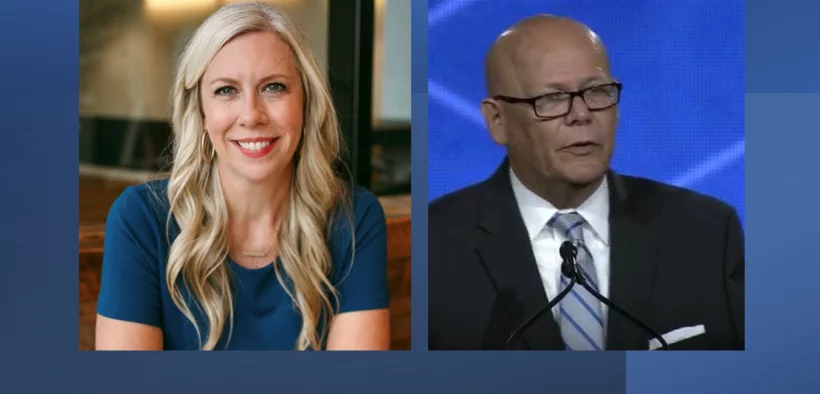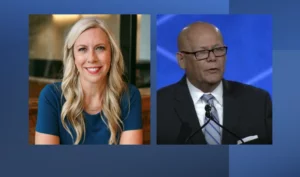PRO and CON: Should Christian Ministries Have Endowments?

In this week’s “Editor’s Notebook,” we’re doing something a bit different. We are examining whether Christian ministries should have endowments. Taking the “pro” position is Karen Houghton. (See her biography below.) I take the “con” position. We welcome your feedback. Send your thoughts to [email protected]. 
PRO: Endowments Can Help Ministries Weather Financial Disruptions
By Karen Houghton
Recent shifts in USAID and federal funding policies have shaken many Christian humanitarian nonprofits, disrupting funding streams and threatening critical missions. Many organizations that rely heavily on government support or single-source funding have found themselves in financial crisis.
Between post-Covid reevaluations, an uncertain economy, and current executive orders, disruption has become our new normal, leaving many nonprofits struggling to find their footing. A recent report by the Center for Effective Philanthropy found that a majority of nonprofit leaders (70%) report that the current political climate is creating a generally negative impact on the nonprofit sector and another 19% don’t know what the future might bring.
This is the wake-up call no one wanted. As believers, we must move forward with Gospel confidence. Christian nonprofits must move beyond a scarcity mindset and take bold, proactive steps toward financial sustainability now more than ever.
For many Christian charities, schools, ministries, and churches, long-term financial strategy has not been a priority—not out of neglect, but due to well-meaning yet inexperienced boards, unrealistic donor expectations, or leaders so focused on urgent needs that long-term sustainability takes a back seat. Many nonprofits are built by passionate founders and visionaries, not financial strategists. While that passion fuels incredible work, without a plan for longevity, even the best missions are at risk.
Organizations that achieve financial sustainability have reserve funds set aside to weather unexpected crises. Research has shown that nonprofits with at least 6 months of cash reserves are 2x more likely to survive financial shocks, yet less than 40% of them have that amount in savings. All nonprofits need a financial safety net, without exception. Today’s standard is 6 to 12 months of operational reserves on hand outside of their annual operating budget.
Without reserves, what happens when a major donor backs out, a policy shift reduces funding, or an emergency expense arises? The mission is put at risk. Leading well means planning ahead. Just as families work to build savings in case of job loss or emergencies, nonprofits need to do the same to weather unexpected crises. Nonprofits must work toward a broader financial strategy that ensures long-term mission stability—starting with an established reserve fund and then moving into endowments.
Yet too many Christian nonprofits avoid building reserves and don’t even consider endowments. Whether due to misconceptions, fear, or tradition, they hesitate to embrace proven financial tools that provide long-term security. Schools have endowments. Hospitals have endowments. Endowments work. So why do so many Christian nonprofits and churches resist them?
Endowments aren’t the right fit for every organization, but too many Christian nonprofits avoid building reserves and don’t even consider the idea of building an endowment. Whether due to misconceptions, fear, or tradition, they hesitate to embrace proven financial tools that provide long-term security. Many schools, hospitals, churches, foundations and ministries have endowments – because they work. So why do so many Christian nonprofits and churches resist them?
The time has come for a shift. Biblical stewardship calls us to plan wisely, ensuring that financial crises and changing government policies do not derail our mission. I work with hundreds of nonprofit organizations, and too many operate without a financial safety net. The scarcity mindset may feel noble, but it is incredibly unwise.
I understand the resistance many Christians feel when thinking about endowments. Many struggle to look beyond a just-in-time financial mindset—whether due to true operational deficits, lack of financial strategy, or, most commonly, fear of donor perception. Some worry that reserve or endowment funds will be seen as hoarding donor funds rather than a biblical, long-term approach to sustainability. It is up to us to change that story.
Today there are many modern endowment options that even small to mid-sized churches and nonprofits should consider. From micro-endowments to unrestricted, quasi, or term endowments, organizations can begin building long-term funds while retaining flexibility. These new models make endowments more accessible and practical than ever before.
Endowments are the easiest story to tell donors: a single gift that keeps giving for generations to come. That’s sustainability. That’s impact. That’s stewardship.
Many Christian churches and nonprofits operate under a scarcity mindset, living year-to-year and relying on short-term and small donations. Some even believe that stockpiling funds in an endowment reflects a lack of trust in God’s provision. But this thinking is flawed and shortsighted.
While some Christian organizations focus on immediate financial needs rather than future stability, there is a growing recognition that strategic planning and wise financial management strengthen mission impact over time.
This is where Biblical stewardship comes in. The Parable of the Talents (Matthew 25:14-30) is a clear directive: wise financial management means multiplying resources, not just spending them. We have to shift from a scarcity mindset to one of abundance.
Endowments aren’t just for massive institutions; they are a vital tool for churches, charities, and ministries of all sizes. Here’s why:
Endowments Don’t Have To Be Huge To Be Impactful.
One of the biggest misconceptions is that an endowment must be in the tens of millions to be worthwhile. The truth is, even a small endowment can provide stability. A $100,000 endowment, invested wisely, can generate thousands of dollars annually. This income can fund programs, sustain salaries, cover emergencies, or support growth initiatives. Over time, as contributions grow, so does the impact.
The power of compound growth means that what starts small can, with steady investment and donor support, become a lasting financial foundation.
New Models Like Quasi-Endowments Offer Flexibility.
Traditional endowments are often perceived as restrictive, with funds locked away indefinitely. However, quasi-endowments offer a flexible alternative.
A quasi-endowment allows nonprofits to invest funds for long-term growth while retaining the ability to access principal if absolutely necessary. This approach balances financial security with operational flexibility, making it easier for hesitant organizations to take the first step toward sustainable funding.
Too many nonprofits scatter their funds across multiple accounts, lacking a long-term vision for sustainability. A designated operational reserve, combined with a well-structured quasi-endowment, offers clarity, stability, and a clear story for donors. Endowments aren’t excess cash sitting idly on a balance sheet—they are protected funds ensuring the long-term health of an organization’s mission.
Endowments Attract Major Donors and Legacy Giving.
Major donors want to give where their impact will be lasting. An endowment offers the perfect opportunity to inspire large gifts and planned giving. The ability to tell donors, “Your gift today will support this mission for generations,” is a powerful and compelling message.
Stock giving and legacy giving, such as bequests or charitable trusts, often align naturally with endowment-building efforts. Donors who might not be inclined to give large sums during their lifetime are often willing to leave a meaningful financial legacy through tax efficient donations like securities or even through estate planning.
Christian nonprofits can no longer afford to be passive or fearful about their financial future. The disruptions we see today will not be the last. Instead of reacting to crises, we must plan for resilience.
Christian organizations have a responsibility not just to their current beneficiaries but to future generations. The mission is too important to be left vulnerable. How will your organization ensure its future? The time to think long-term is now.
Karen Houghton is the Founder and CEO of Infinite Giving, a consultancy that specializes in nonprofit financial stewardship. She is a former Executive Director of a nonprofit, serves on various boards including Berry College’s Board of Trustees and FinTech Atlanta, and currently advises hundreds of nonprofits across the US.
CON: Endowments Are Almost Always Bad Ideas For Christian Ministries
By Warren Cole Smith
The Internal Revenue Service recognizes 1.9 million organizations as tax-exempt. Of these, more than a million of them are “religious” organizations. For almost all of them, an endowment is a bad idea. Here’s why:
Money should go to ministry.
I agree that Christian ministries should have a reserve fund. However, the assertion that “today’s standard is 6 to 12 months of operational reserves on hand outside of their annual operating budget” may be aspirational, but it is not reality for most Christian ministries – nor should it be.
The median for organizations in the MinistryWatch 1000 database 57 percent of total annual expenses in total current assets, or barely over six months. About 44 percent have less than six months. Almost none of them have 12 months. And these are the largest and generally the best funded ministries in the nation.
For most organizations with a mature and efficient fundraising capability, and a constituency of regular donors, four to six months of operational reserves should be enough. The rest should go, as quickly as possible, directly to ministry activities. Endowments may attract major donors, but doing great work now, helping people now, also attracts major donors. Money follows ministry. Do great work, tell your story well, and donors will notice.
Endowments often deviate from donor intent.
Almost none of the large foundations and endowments operating today give grants consistent with the original donor’s intent. One example: Theological and fiscal conservative J. Howard Pew supported Billy Graham and funded a biography of John Calvin when he was alive. But today, the Pew Charitable Trusts support policy positions on social issues that Pew would surely find objectionable.
The Episcopal Church is a particularly instructive example. The church has over $600 million in trust assets, $15 billion in clergy retirement funds, and another $5.0 billion among its parishes and dioceses – much of that money donated by faithful Christians of generations past. Yet the denomination itself continues to decline, in part because ideologues in leadership have no incentive to honor the intentions of donors, and little or no restrictions on how that money can be used or invested.
The Episcopal Church is just one of many hundreds of examples of organizations that have strayed from its roots, taking donor money with them. Oberlin College was founded by Charles Finney, the key figure of the Second Great Awakening. Today, Oberlin is one of the most progressive colleges in the nation. Harvard’s founding motto was Veritas, Christo et Ecclesiae, “Truth for Christ and the Church,” (later shortened to Veritas). Since 2012, Harvard has hosted an annual “Sex Week.” The school bills it as an “interdisciplinary, thought-provoking, scholastic, innovative, and applicable to student experiences in order to promote a holistic understanding of sex and sexuality.” What it really means for most students who participate is free samples of condoms, along with other things I can’t describe here.
Of course, you can’t blame the “mission drift” of these institutions exclusively on endowments. But the guaranteed income that endowments provide makes it easy for a relatively small number of committed ideologues to change the spiritual trajectory of an institution.
It is extraordinarily difficult to build enough restrictions into an endowment or foundation to preserve donor intent more than a few decades after the donor’s death. That’s why we at MinistryWatch subscribe to the motto, “Give while you live so you know where it goes.” If your philanthropy fattens an endowment, you have no way of knowing where the money will end up. You will, at best, be trusting the word of people you have never met and may or may not share your values.
Endowment managers are committed to wealth (and institutional) preservation.
One of the great assets of a Christian non-profit organization is that it is nimble, agile, responsive. It can adapt quickly to shifting needs. However, organizations with investment assets often become reluctant to deploy those assets even when there is a clear and urgent need.
The 2021 Captrust Financial Advisors Endowments & Foundations survey reported in Non-Profit Times said found that “among organizations with investment holdings, 94 percent of financial managers view them as having long-term horizons, and 78 percent plan to maintain their portfolios in perpetuity.” In other words, the goal of these fund managers is not the distribution of grants but the preservation and growth of the corpus.
The survey also found that during the coronavirus pandemic – when giving increased nationally and the needs were acute – organizations with endowments hunkered down and protected those assets. More than three in 10 managers (31 percent) reported suspending or terminating programs or services. That despite the fact that many of these funds (24 percent) experienced increased fundraising or planned giving.
Martin Morse Wooster is the author of Great Philanthropic Mistakes (Hudson, 2006) and The Great Philanthropists and the Problem of “Donor Intent”. He says that the bureaucracies of big foundations can be as bad as governmental ones. He said, “My advice to the small donor is the same as it would be for the large one. Find the five best faith-based charities in your city and find out what help they need. Listen to these charities.”
The Bible warns against the hoarding of money.
The Parable of the Talents may provide guidance for those considering this question. (Or may not.) But, even if it does, it is not the only passage worth considering, and certainly not the most relevant.
When a rich man built a bigger storehouse to hold his rapidly accumulating wealth, Jesus was blunt in his description of him: “You fool! This very night your life is demanded of you. And the things you have prepared — whose will they be?” (Luke 12:20)
We also have the example of Jesus, who said of himself, “Foxes have dens, and birds of the sky have nests, but the Son of Man has no place to lay his head.” (Matthew 8:20)
And the Lord’s Prayer, a remarkable short prayer which we understand to be the model for how we should pray, Jesus said we should pray, “Give us this day, our daily bread.”
***
So, yes, we should plan and exercise prudence. And there may be limited situations in which endowments are justified, but for the Christian ministry, those situations are extremely rare. Because while planning and prudence are good, but Providence is better.
Warren Cole Smith is the editor of MinistryWatch. He has written about charity and philanthropy for more than 25 years.



